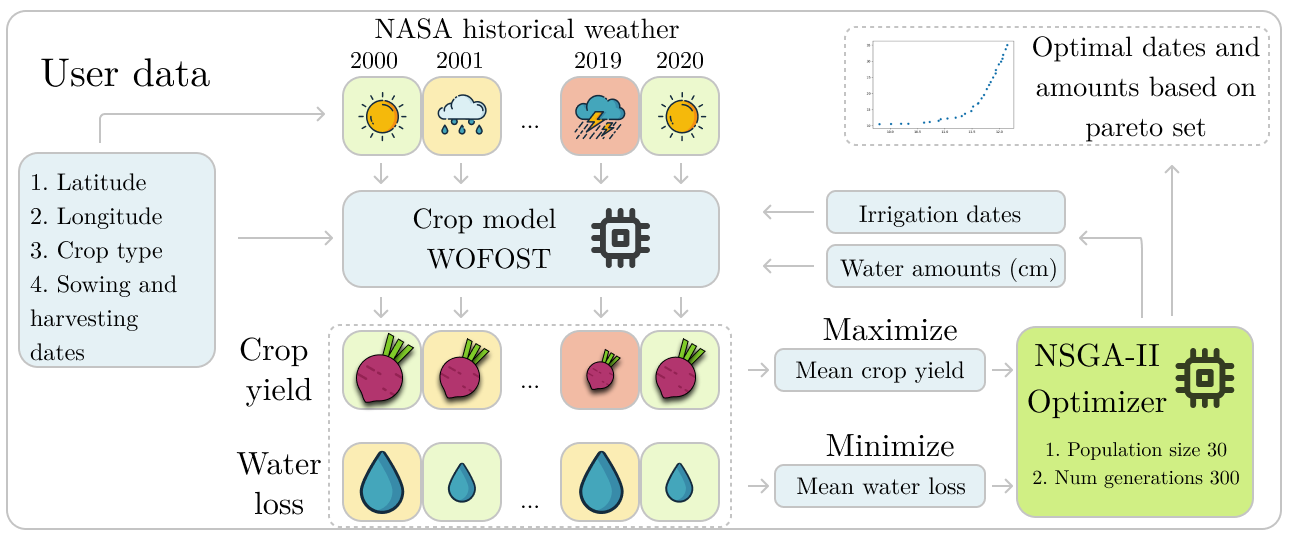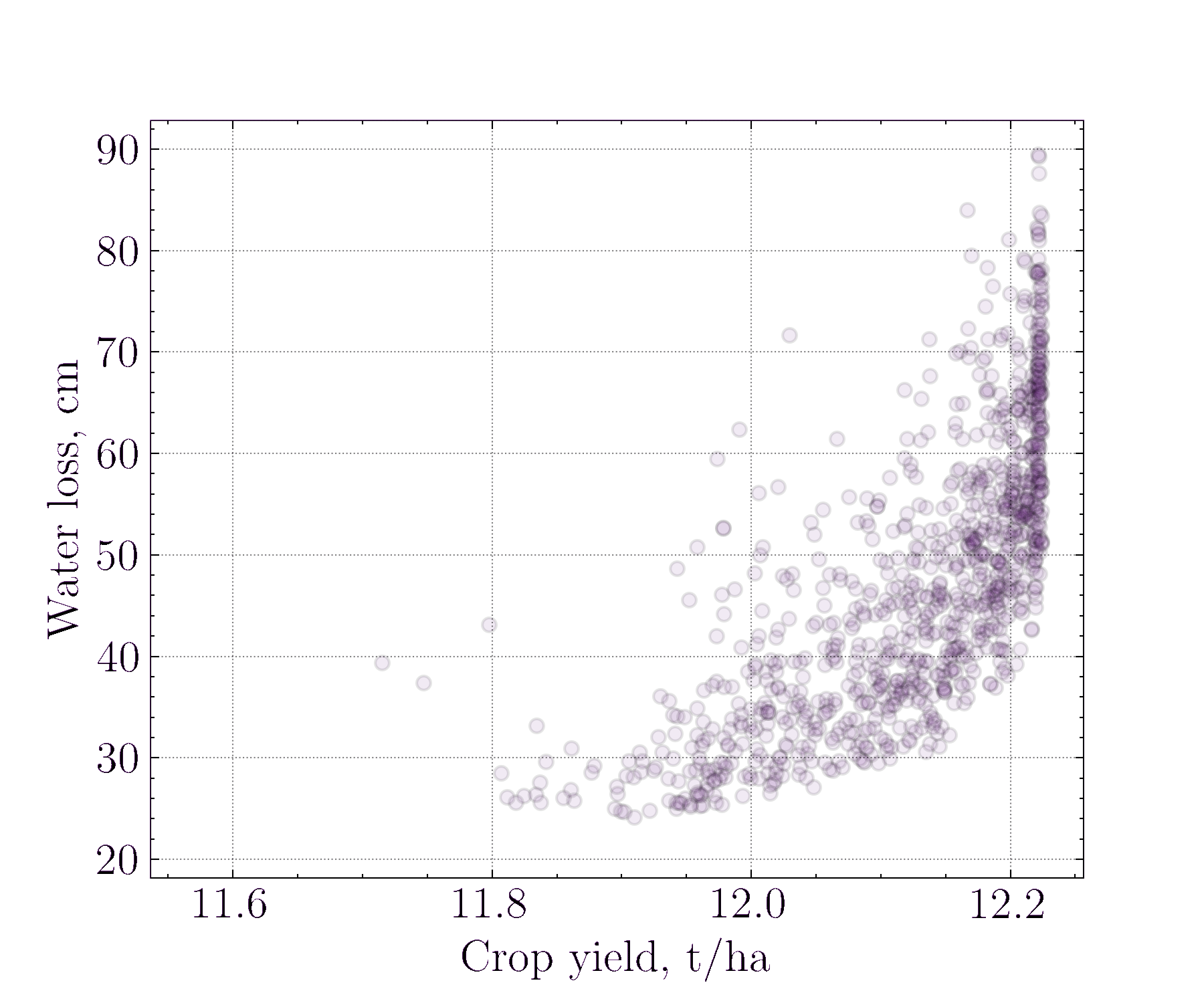Multi-objective approach to optimize irrigation using a crop simulation model and historical weather data.
We propose a machine learning approach based on the crop simulation model WOFOST to assess the crop yield and water use efficiency. In our work, we use historical weather to evaluate extreme weather scenarios. The application of multi-criteria optimization based on the non-dominated sorting genetic algorithm-II (NSGA-II) allows users to find the dates and volume of water for irrigation, maximizing the yield and reducing the water loss.
How to run example of WOFOST model and multi-objective irrigation optimization code?
Open How_to_start.ipynb in Google Colab!
To plot results of optimization open Plots_for_ICCS.ipynb
PCSE/WOFOST - Python Crop Simulator Environment
https://pcse.readthedocs.io/en/stable/
PyMOO - Multi-objective optimization
Clone this repository and create new conda env on your local machine
git clone https://github.com/EDSEL-skoltech/multi_objective_irrigation.git
Create new env with pcse package for crop models WOFOST
conda env create -f py3_pcse.yml
conda activate py3_pcse
To run multi-objective optimization with example from Moscow region and potato crop run file
./run_example.sh
User can edit input file --path_to_user_file and other parameters
python3 multiobjective_optimizer.py --path_to_data_dir './util/input_data/'
--path_to_user_file './util/input_data/malino_potato.json'
--path_to_CSV_weather './data/meteo'
--num_generation '5' --population_size '10'
--path_to_npy_files './experiments/test/potato/'
User can write main information about agricultural management in JSON format
Example for Moscow region
Here we setup geo coordinates,
Sowing date in format YYYY-MM-DD as "crop_start"
Harvesting date in format YYYY-MM-DD as "crop_end"
User can select crop among number of crops: list of crops
Irrigation dates and volumes (cm), date of fertilization and amounts on NPK (kg)
{"name": "Potato",
"latitude": 54.85,
"longitude": 38.85,
"crop_start": "2019-04-20",
"crop_end": "2019-09-15",
"crop_name": "potato",
"irrigation_events": ["2019-06-10", "2019-06-20", "2019-07-01", "2019-07-10", "2019-07-20","2019-07-29", "2019-08-15"], "irrigation_ammounts": [2, 2, 2, 2, 2, 2, 2],
"npk_events": ["2019-06-22"],
"npk": [[90,10,90]]
}
Mikhail Gasanov – Mikhail.Gasanov@skoltech.ru
Distributed under the MIT license. See LICENSE for more information.
- Weather loader from NASA-POWER
- Test how weather loader convert data to CSV
- Function to save optimal irrigation dates and volumes to txt file
- Fork it (https://github.com/EDSEL-skoltech/multi_objective_irrigation/fork)
- Create your feature branch (
git checkout -b feature/fooBar) - Commit your changes (
git commit -am 'Add some fooBar') - Push to the branch (
git push origin feature/fooBar) - Create a new Pull Request





